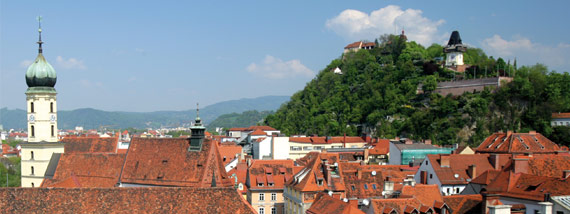Young Researchers' Minisymposium
YR Me2 Structure formation, transition and instabilities in film flow
Christian Heining (U Bayreuth), Yeaw Chu Lee (HWU Edinburgh), Judith Vatteville (U Thessaly)
Liquid film flows play a key role in many technological innovations and naturally occurring phenomena. Examples of these can be seen in numerous engineering processes such as those involving the deposition of thin film coatings, two-phase heat exchangers and evaporators; in nature they encompass areas and length-scales as diverse as tear films on the eye to lava flows and avalanches. It is this wide range of applications that highlights the importance and relevance of understanding the mechanisms and phenomena induced by film flows.
The flow of a viscous liquid, driven by gravity, down a planar substrate represents the simplest configuration of a film flow, for which an exact solution can be obtained from the Navier-Stokes equations – the so-called Nusselt solution. However, analysing the physically realistic flows of interest highlighted above is much more complex due to influences from the shape and properties of the substrate – if, for example, it is curved or flexible, contains surface patterns such as well defined topography and/or obstacles, and/or is subjected to external forcing effects in the form of substrate vibration. In particular, the presence of topographic features greatly affects the local flow phenomena where interfacial tension, viscous and free surface effects play a major role in determining the flow behaviour – that is, the internal flow structure together with the nature of the free surface disturbance and interfacial stability. A better fundamental understanding of these properties and how they can be harnessed and controlled is essential. Their impact in relation to potential savings in resources and manufacturing cost in the industrial sector have yet to be fully realised, with their use in relation to forming novel functional coatings for applications in the process engineering, transport, environmental science and micro-electronics fields still at an early stage.
The aim of the Mini-Symposium is to provide a forum, bringing together young researchers, scholars and experts from all over Europe, to review recent interdisciplinary advances in the mathematical modelling, analytical and computational solution and the experimental validation concerning the analysis of the fluid dynamics of liquid film flow phenomena.
Yeaw Chu Lee (HWU Edinburgh), Sergii Vermieiev, Harvey Thompson, Phil Gaskell (U Leeds): Three-dimensional continuous inertial thin-film flow over surface topography: free-surface disturbance and underpinning flow structure
Thilo Pollak, André Haas, Nuri Aksel (U Bayreuth): Capillary boundary-layer effects in thin film flow
Judith Vatteville (U Thessaly), Anna Georgantaki (U Thessaly), Michalis Vlachogiannis (TEI Larissa), Vasilis Bontozoglou (U Thessaly): The role of the transverse dimension in the instabilities and transitions of inclined film flow
Christian Heining, Thilo Pollak, Nuri Aksel (U Bayreuth): Eddy suppression in films over topography
David Slade (U Leeds), Yeaw Chu Lee (HWU Edinburgh), Phil Gaskell (U Leeds): Rivulet formation in gravity and thermally driven thin film flow on chemically and/or topographically heterogeneous substrate
Selin Duruk, Alex Oron (Technion Haifa): Nonlinear dynamics of a liquid film on an axially oscillating cylindrical surface in the high frequency limit
|





